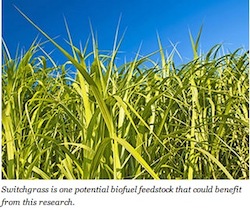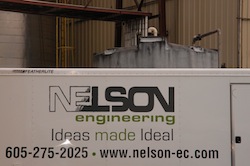Scientists working at the Argonne Leadership Computing Facility (ALCF) are looking to nature’s catalysts, enzymes, for inspiration in their quest to find a more effective means of converting biomass into renewable fuel. The research is focused on inedible plant materials that contain cellulose (such as wood chips and switchgrass), which can be broken down into sugars and then converted into biofuels.
According to the researchers, it is a challenging process to commercialize because plant cell walls are tough and recalcitrant, meaning they naturally resist being broken down into sugars. Therefore this obstacle has made it difficult to produce biofuels at a cost and pace that can compete with petroleum-based transportation fuels.
 To address this issue, the research team from the National Renewable Energy Laboratory (NREL) in Colorado is using Mira, the ALCF’s 10-petaflops supercomputer, to conduct large-scale simulations of the physical behavior of cellulase enzymes. Naturally produced by some fungi and bacteria, these particular enzymes are being modeled because they effectively trigger the chemical changes necessary to degrade hardy plant materials into life-sustaining sugars.
To address this issue, the research team from the National Renewable Energy Laboratory (NREL) in Colorado is using Mira, the ALCF’s 10-petaflops supercomputer, to conduct large-scale simulations of the physical behavior of cellulase enzymes. Naturally produced by some fungi and bacteria, these particular enzymes are being modeled because they effectively trigger the chemical changes necessary to degrade hardy plant materials into life-sustaining sugars.
“Through our studies at the ALCF, we hope to uncover how these enzymes can be manipulated to develop superior biological catalysts for improved biofuel production,” said Michael Crowley, NREL senior scientist and project principal investigator.
Crowley and his colleagues are carrying out the simulations to gain a fundamental understanding of the complex cellulose-to-sugar conversion process, known as enzymatic hydrolysis. With this information, researchers will be able to identify potential enzyme modifications and then feed their discoveries into experiments aimed at developing and validating improved catalysts.Read More










